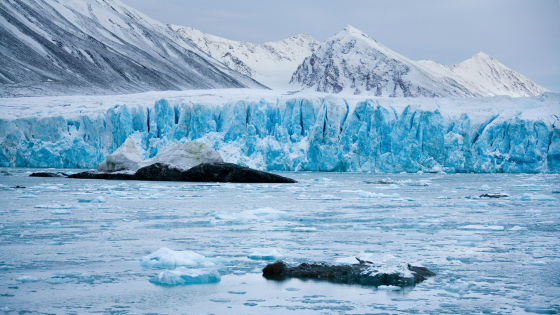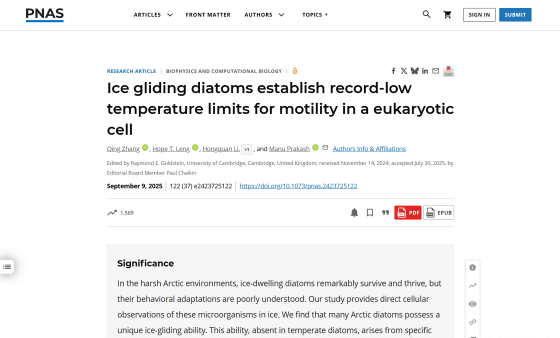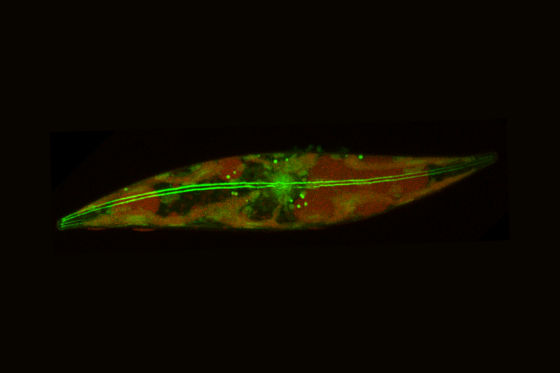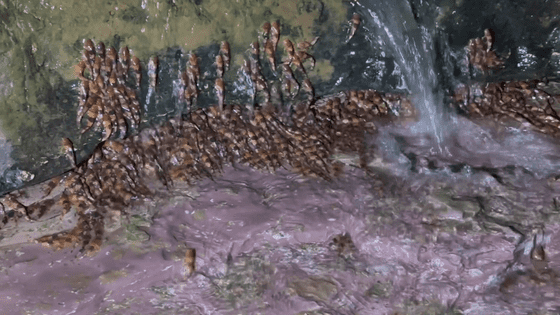A living organism active even in the extremely cold environment of minus 15 degrees has been discovered in the Arctic ice

When ice cores are collected in the Arctic, they sometimes contain
Ice gliding diatoms establish record-low temperature limits for motility in a eukaryotic cell | PNAS
https://www.pnas.org/doi/10.1073/pnas.2423725122

Scientists uncover extreme life inside the Arctic ice | Stanford Report
https://news.stanford.edu/stories/2025/09/extreme-life-arctic-ice-diatoms-ecological-discovery
A research team from Stanford University, the University of Alaska, and other institutions explored the Arctic in the summer of 2023 and collected ice cores at 12 observation stations. The team used a shipboard microscope they had developed over many years to image the interior of the ice and record the ecology of diatoms. After returning to the lab, they extracted diatoms from the ice cores and observed their behavior in petri dishes that replicated the Arctic's 'thin frozen freshwater layer' and 'very cold saltwater layer.'
In the Arctic, salt is released during ice formation, creating freshwater ice with tiny fluid channels inside. The research team recreated these tiny microfluidic channels inside the ice by freezing hair along with the ice.
Diatoms are single-celled organisms that perform photosynthesis using chloroplasts within their cells, and are characterized by being covered with a siliceous frustule. The photo below shows diatoms found in Arctic ice.

By examining the diatoms' activity at temperatures below freezing, the researchers found that they were not immobilized or trapped, but actively moving through the narrow microfluidic channels. As the team continued to lower the temperature, they found that the diatoms were still moving, even at minus 15 degrees Celsius.
'This temperature of -15 degrees Celsius is the lowest temperature at which
Diatoms move by gliding across surfaces, rather than by twisting their bodies or using appendages. They secrete polymers similar to snail mucus, which attach to surfaces like ropes with anchors. They then glide forward by pulling on these mucus ropes.
The mucus rope mechanism relies on actin and myosin , the same biological system that drives human muscle movement. How this mechanism continues to function at sub-zero temperatures remains a topic of future research.
'You can actually see the diatoms gliding, almost like they're skating on ice,' said Chin Chang, lead author of the paper and a postdoctoral researcher at Stanford University.

'The Arctic may be white on the surface, but underneath it's a vibrant green color from the algae. In a way, it reminds us that these algae aren't just tiny creatures, they're an important part of the food chain, controlling what's happening under the ice,' Prakash said. Future research is expected to shed light on the impact of diatoms on the Arctic food chain and ice formation.
Related Posts:
in Science, Creature, Free Member, Posted by log1h_ik







